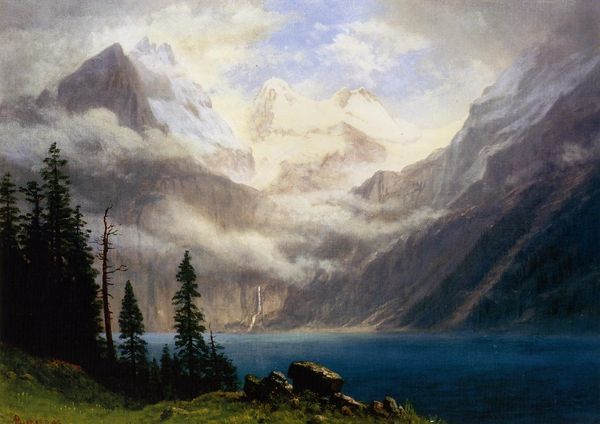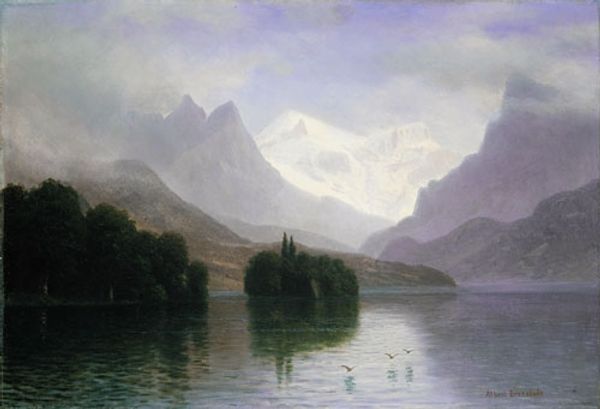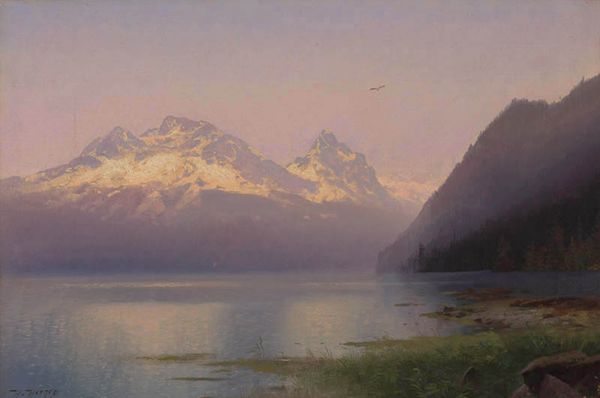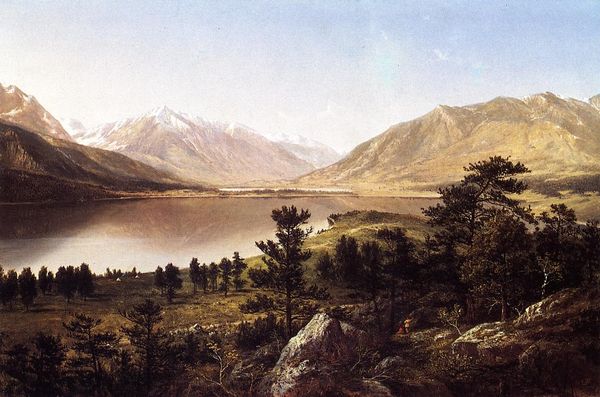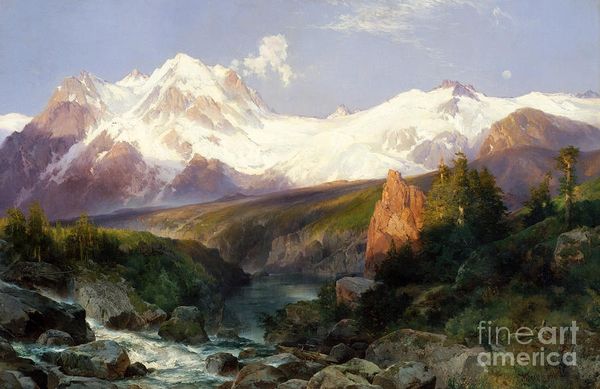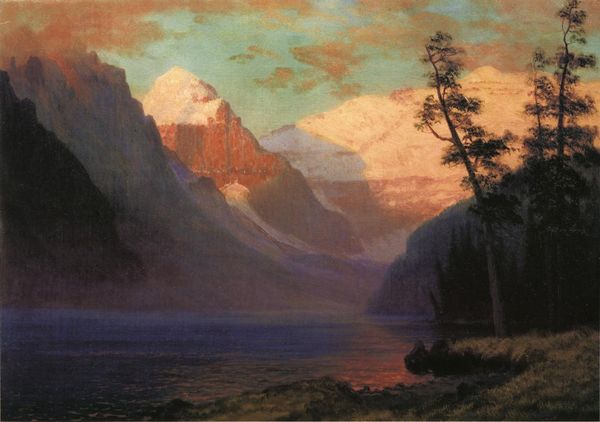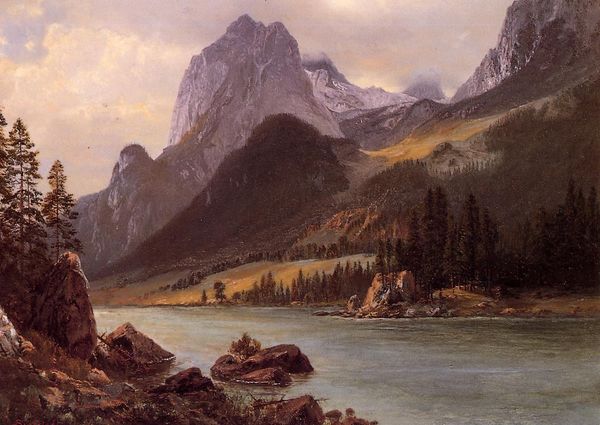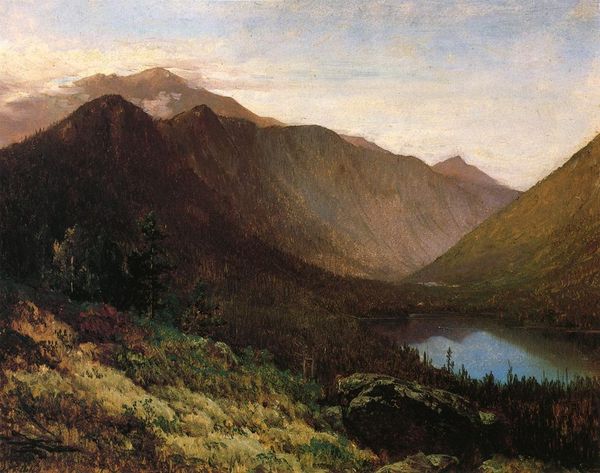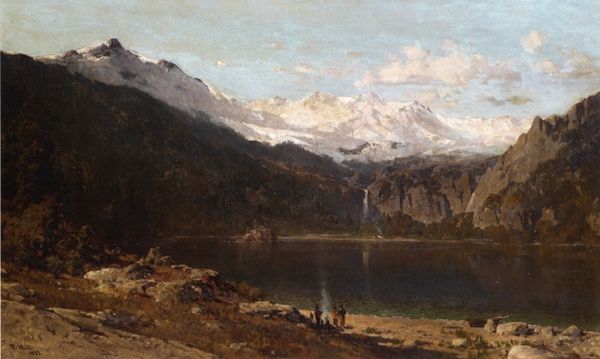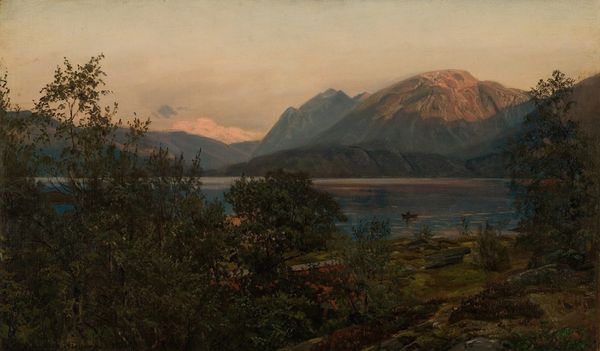
plein-air, oil-paint
#
lake
#
plein-air
#
oil-paint
#
landscape
#
river
#
oil painting
#
romanticism
#
mountain
#
hudson-river-school
#
water
#
realism
Copyright: Public domain
Albert Bierstadt painted "The Grand Tetons, Wyoming" to capture the sublime beauty of the American West. The snow-capped peaks of the Grand Tetons evoke a sense of awe and the sublime, reminiscent of the divine presence that nature can inspire. The mountain motif transcends time and appears across cultures. In ancient Greece, Mount Olympus was the home of the gods. In the East, mountains symbolize a connection to the heavens, a site for spiritual awakening and reflection, like Mount Fuji in Japanese art. Bierstadt, as many artists before him, tapped into this collective fascination, inviting viewers to contemplate the profound, almost spiritual experience of confronting nature's grandeur. Consider the emotional resonance: the mountains, unyielding and majestic, inspire awe. The interplay of light and shadow suggests nature's duality—its capacity for both beauty and severity. This painting speaks to the enduring human quest to find meaning in the landscape, tapping into a well of cultural memory that continues to resonate today. This reflects a cyclical progression, as it continues to evolve and resurface in different contexts.
Comments
No comments
Be the first to comment and join the conversation on the ultimate creative platform.

